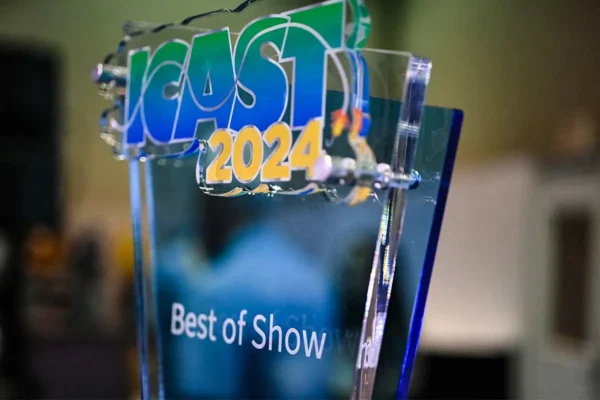Whether you order your I&D labor from the General Contractor or an EAC, you pay for labor by the hour; normally starting with a minimum of four, aka a “four hour mini.” This gives you a lot to consider when deciding how much labor you need and when you need them.
If you’re ordering your labor through the General Contractor (GC), you normally won’t start being charged until you pick them up (normally). So if you order two people for 8 a.m., but, for whatever reason, don’t pick them up until 10 a.m. you won’t be charged for the two hours in between. That’s the good news. The bad news though is that the GC will use the majority of the union labor they order just to get the show up and running. They put their best people on the projects they determine most important, which leaves you with whatever is left. My personal experience with labor from the GC is that I got the bottom of the barrel. True, I paid about $5.00 an hour less per man. At that rate I would typically save about $300.00 on the install. I should say it would have saved me $300.00 if the quality of the labor I received was the same as ordering through an EAC.
The union members who make up the labor pool in each city are all part of the same union; or part of one of several unions depending on the city and work to be performed. For instance, Chicago has a decorators union AND a carpenters union. They look the same but perform different tasks on the floor. A carpenter will deliver the six-foot table you order, but, if you want it draped, well that requires a decorator. It seems that stapling a skirt to a table requires some sort of special skills in Chicago.
When it comes to the quality of labor, however, it’s a different story. Typically the more experienced and better workers are scooped up by the EAC companies or are assigned to the most important jobs for the GC. While your booth is the most important part of the show for you, it has little or no value to the GC, which means they don’t really care how fast or how well your exhibit is assembled. In fact, the longer the better because they make a cut of what you pay for each hour. You get whoever they have available at the time you pick up your labor.
If, however, you use an EAC to assemble your booth, you will get higher quality labor and have more leverage should any issues arise. Your bill to the GC is required to be paid in full before they will load your exhibit onto your truck after the show. If you have any issue with your labor, you still have to pay your bill in full and hopefully work it out on the back end if you want your truck loaded. Good luck with that one. An EAC isn’t connected to the GC, so you won’t receive a bill until a week or two after the show has closed. Should there be any issues, you have time to get it sorted out before you write your check.
For my money, or at least the money of the company I work for, the EAC is a much better choice. There are some considerations here as well though. Labor ordered from the GC doesn’t go on the clock until you pick them up. But EAC labor starts getting paid from the time you designated. So if you ordered labor for 8 a.m. but they can’t start until 10 a.m., you still pay for the two hours. If your electrical is incorrect or not down yet, your truck hasn’t unloaded or any number of other issues, you still pay. But there are ways to avoid this.
First, I ALWAYS set my travel plans so that I arrive as early as possible on the day BEFORE the first day of setup. There are several benefits to this, the biggest being that I have time to go to the convention center and check on the status of my booth space. I check to see if all of my crates have arrived from the advanced warehouse and for any damage first. Then I look at my utility placements to ensure they are down and correct. Depending on the show and time I arrive, neither of these may be true. That’s OK. They may both be in place later that evening, but at least now I know and I can return later to check if needed. If my utilities are down but incorrect, I might be able to have it corrected that evening. If nothing else, I can find out where I need to go first thing in the morning. The point is that information is power. By showing up a day early and checking out my space, I know what to expect when I arrive the next morning and sometimes I’m able to address issues that day.
Second, I ALWAYS set my labor call for 10 a.m. on the first day of setup. Most show floors will open at 8 a.m. to begin setup. This gives me two hours before my labor arrives to deal with any issues and NOT have them on the clock. At $100.00 an hour in some cities, this can save me a lot of money. I may pay some overtime if the set goes long, but I’d rather pay overtime for work being done than straight time for my crew to stand around looking at my bare concrete. And hey, if I don’t have any issues, I sleep in a little later that first day and have a nice big breakfast.
Third, on the dismantle, I ALWAYS schedule my labor to arrive at least an hour after the doors close. The first 30 minutes after a show is wasted time anyway. You’re trying to help your crew get out and you may even have some attendees still in your space. Another 30 minutes allows you to move your stuff out of the way, so you aren’t paying your labor to move brochure boxes before they can start your dismantle. By ordering labor to start at a later time, we aren’t stumbling over each other and I’m not paying them to wait on me. This also allows more time for my crates to be returned, so when the exhibit is being dismantled it can go straight into the crates saving time and damage.
Finally, I ALWAYS send my exhibit to the advanced warehouse. Again, there are several benefits to this, including labor costs. Freight sent to the advanced warehouse is delivered to the show floor the day before setup begins. The GC knows they are going to be unloading trucks all day, so they get the stuff from the warehouse done first and out of the way. This means my crates are on the floor before setup begins.
If you ship directly to the show, your truck goes to the marshaling yard and is given a number to unload. Then it waits until the docks are ready for that number on the day of setup. If your truck isn’t unloaded until 2 p.m. and you’ve ordered your labor for 10 a.m. as noted above, you’re still paying for four hours of labor for every guy. AND, you probably just paid for their lunch break. It is true that it will cost you more to send your booth to the advanced warehouse than directly to show. But if your labor is sitting around waiting for your truck to unload, you’ll most likely end up spending more money than you would have at the warehouse.
The larger your exhibit is, the more money you’ll save by scheduling your labor correctly. The word of the day when it comes to tradeshows is money. It’s going to cost you a lot of money to exhibit at a tradeshow. That’s just the way it is. But if you can save a little here and a little there, you’ll find you’ve saved a lot. It just takes a little planning.






























